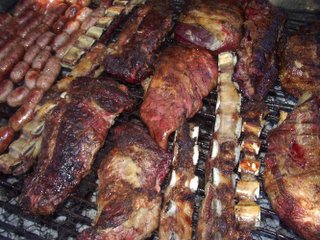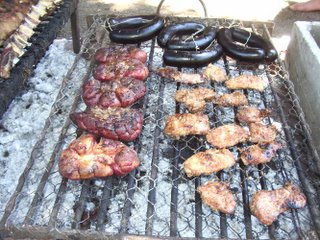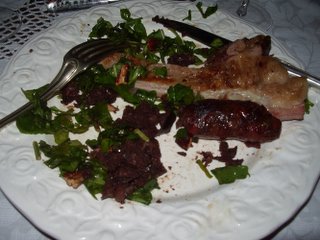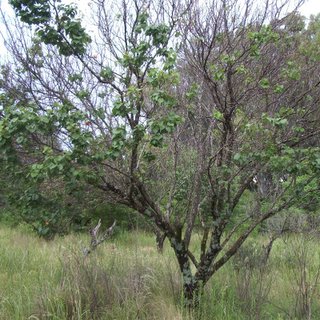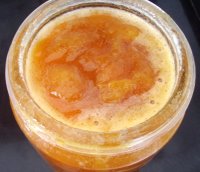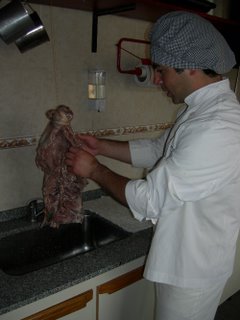


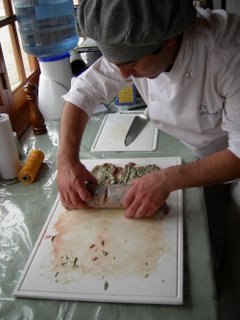

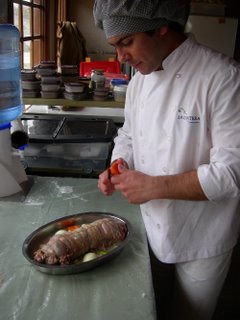
While in Argentina we traveled down south to El Calafate, in Patagonia, for New Year's and some glacier trekking. We stayed in a beautifully situated, small hotel called La Cantera, just a drive away from some of the coolest glaciers on earth. I really recommend checking out the hotel's new website (there's a link below) to see just how beautiful the place is.
While we were there, the Executive Chef, Juan Pablo Leyes, was kind enough to let me watch him prepare some wild hare for that evening's menu. (I wondered if it might have been the one that our driver massacred on the way to the glaciers that morning, but it showed no real signs of trauma, except for being dead.) Chef Leyes is an incredibly talented young man and I watched as he deftly boned, marinated, stuffed and cooked the hare (liebra) with a mixture of seven herbs, butter, various vegetables and a yummy bottle of rosé. The charming play by play was brilliant and I'll try and figure out how to post the video I took. When you see everything that this guy accomplishes, in such a remote outpost of one of the most untouched southernmost parts of the world, you will never feel justified again while complaining that Whole Foods was out of (fill in the blank.)
I wish Chef Leyes all the luck and success possible; and if any of you happen to venture to his part of the world, make sure you ask him to take you out on the town bar dancing and bar hopping. Just don't plan on coming home until the sun comes up. And if you can't find a taxi, just hitch a ride in the back of the local baker's truck. And try not to sit on the croissants like I did.
www.hotellacantera.com



